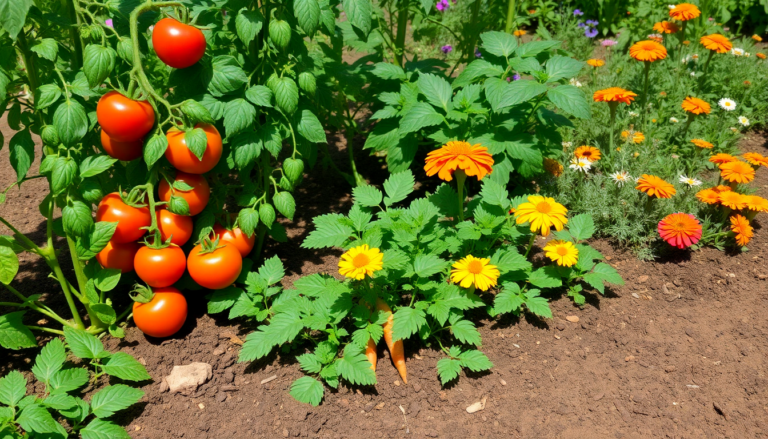Argomenti trattati
Companion planting is more than just a gardening trend; it’s a time-tested practice that taps into the natural relationships between plants. By pairing crops that support each other, you can create a thriving ecosystem that not only boosts growth but also keeps pests at bay. Imagine a garden where plants share resources like sunlight and nutrients while providing natural pest control! Curious about how this works? Let’s explore the principles of companion planting and discover practical tips to help you cultivate a vibrant, productive garden.
Understanding the Benefits of Companion Planting
So, what makes companion planting so special? At its core, this method fosters a balanced garden environment. When you thoughtfully select plants that complement each other, they can really help one another thrive. For example, some plants attract beneficial insects that feast on garden pests, while others can improve soil health or ward off harmful insects with their natural properties. This approach not only minimizes the need for chemical pesticides but also nurtures biodiversity in your garden.
Take the classic pairing of tomatoes and basil. Not only does basil amp up the flavor of tomatoes, but it also repels pesky insects like aphids and whiteflies. This is a perfect example of how companion planting can lead to healthier plants and a more abundant harvest. Plus, mixing different species can maximize your space and resources, making your gardening experience even more efficient.
Key Principles for Successful Companion Planting
Ready to dive into companion planting? Here are some key principles to keep in mind. First, group plants that share similar needs for sunlight, water, and soil pH. This compatibility ensures that all plants in the group can flourish together. Think about the height and growth patterns of your plants, too. Taller plants can provide some shade for shorter ones, which is especially helpful during those hot summer months.
Another important tip is to separate plant families that are susceptible to the same diseases to reduce the risk of spreading infections. For instance, keep nightshades like tomatoes and peppers apart, and instead, plant companions like marigolds or nasturtiums. These flowers not only attract beneficial insects but also act as trap crops for pests.
And don’t forget about the fragrant herbs and flowering plants! Placing these along the edges of your garden beds not only makes your garden look beautiful but also enhances pollination and deters pests. For example, planting catmint can repel a variety of pests while attracting pollinators, creating a balanced ecosystem in your garden.
Practical Implementation of Companion Planting
When it’s time to implement companion planting, start with some research on which plants work well together. There are countless combinations that have proven effective. For example, pairing peppers with basil, marigolds, and onions can create a strong defense against pests while elevating the overall flavor of your harvest.
Begin by sketching a layout for your garden that includes these companion plants. Consider interspersing fast-growing crops like lettuce or radishes with slower-growing varieties like peppers. This strategy maximizes space and ensures that every plant gets its fair share of sunlight and nutrients.
As you nurture your garden, keep a close watch on the health of your plants. Monitor pest activity and be prepared to tweak your plant combinations if some pairings don’t thrive as expected. It’s all about experimenting and adapting to the unique environment of your garden!
Monitoring and Optimizing Your Companion Planting Strategy
Once you’ve implemented your companion planting strategy, it’s essential to keep an eye on various key performance indicators (KPIs) to evaluate its effectiveness. Metrics like plant health, pest presence, and overall yield will give you insight into how well your combinations are working. Additionally, tracking how different plants interact over time will guide your future planting decisions.
Don’t forget to adjust your strategies based on the data you collect from your garden! If you notice certain combinations leading to increased pest activity, it might be time to swap those plants for more compatible options.
In the end, companion planting is a dynamic process that requires ongoing observation and adaptation. By embracing this approach, you can create a thriving garden ecosystem that not only boosts productivity but also promotes environmental health. So why not give it a try? Your garden—and the planet—will thank you!

